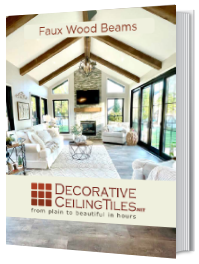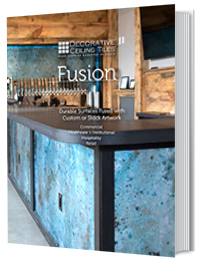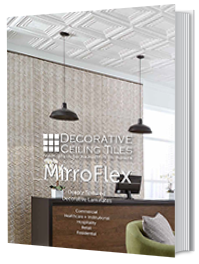10 Inexpensive Basement Wall Panels to Use
Written by Milan Jara on 19th Oct 2022
Trying to finish your basement on a budget? Here are inexpensive basement wall panels that look great as well as design tips for your space.
Choosing the best wall panels is essential when redecorating a basement. They must not only fit in with your style, but they also need to withstand an area that may be high in moisture. If you are looking for budget-friendly options, read on for information on inexpensive basement wall panels and a few design tips for your living space.
Basements are no longer dark places used as utility rooms or for doing laundry. There are several ways that homeowners can decorate their basements to make them more family-friendly – even on a budget. These suggestions will match your décor and make it easy on your wallet.
10 Inexpensive Basement Wall Panels
A basement wall panel installation will help insulate a normally cool area of the house and can prevent moisture if properly installed. These panels will waterproof the basement walls and have soundproofing capabilities as well.
When considering basement walls, they will have different needs compared to the other floors. There are materials best suited for below-grade floors, and some will assist in waterproofing your walls. Before narrowing down your search, you may want first to take note of any issues your basement frequently experiences to point you in the right direction.
1. Stone or Brick 3D Wall Paneling
Adding brick or stone paneling can increase the aesthetic appeal and be easy on the budget. It just depends on how you use it. If you have painted walls, you can place these panels halfway up to add warmth to the room and make it feel almost like a cabin. Additionally, you can do a feature wall with stone or brick paneling or use it around a fireplace.
Stone tends to be more affordable than brick; however, brick tends to stand out more, and it may not be a massive investment if you are just covering part of the wall.
Most of these wall panels are glue-up and easy to apply. You will need to measure, cut, and carefully glue the panels to match each other. However, the result will be truly spectacular.
2. Wood Wall Paneling
Wood really warms up the basement. The texture creates aesthetic appeal and makes the area more inviting to guests. Wood paneling comes in different types and shades, making it easy to find something that fits within the budget and looks great with the style of the room.
The most affordable type of wood paneling is shiplap, which is gaining popularity in homes. Installation is easy as you just need to fit individual pieces into grooves. Another affordable option is beadboard or drop siding. These come in linear and horizontal designs, which can make a room appear larger than it is. This works well for many basements.
If you have popcorn ceilings or an uneven concrete floor, you may want to consider wood paneling as it covers it well.
Also Wood Slat Walls are the perfect choice for homeowners who want stylish and functional wall treatments that are also good for the environment and their family's health. Made from the same eco-friendly material as yogurt pots. These products are free from harmful chemicals that can cause indoor air pollution and contribute to sick house syndrome.
3. Rigid Foam Sheets
This type of paneling is cost-efficient and popular. It is an expanded polystyrene foam that provides a barrier against water leaks and moisture. Expanded polystyrene foam can reduce energy consumption and better control the temperature in your basement.
Providing there are no gaps or holes upon installation, these sheets work well in this area. If they aren’t air-tight, they will not be as efficient as they allow air and moisture to pass through. They are also more sensitive to sunlight and may not be ideal for a walk-out basement.
4. Decorative Panels
Decorative wall panels are a great choice if you want to add some flair to your basement. You even have complete freedom to customize the wall panel design. However, the benefits and costs will vary by paneling material. The best choices are:
- Laminate
- PVC sheet
- Prefabricated board
- Gypsum board
These materials are perfect for a basement because they are waterproof.
5. Flat Panels
Flat panels offer a modern design element void of decoration. It is best in contemporary or minimalistic designs because it has a streamlined, sleek appearance. It is also the least expensive paneling type, coming in on the lower end of the spectrum per square foot.
6. Board and Batten
Board and batten are another popular choice in homes. They have vertical molding pieces which attach to a seam of a large board.
7. Drywall
Drywall panels are a common choice when it comes to finishing a basement. The cost is low, they are easy to install, and they are naturally fire-resistant. You will need to properly source the best drywall tape so you can prevent molds, moisture, and fire- and soundproof the basement. The best ones to choose are purple or green boards. You can add paint to prevent moisture; however, drywall isn’t completely waterproof.
8. Wahoo Walls
This wall paneling is done fast and has an easy installation since it uses aluminum tracks, eliminating the need for studs or drywall. They contain inorganic material, making them resistant to mold, and they come pre-insulated.
9. Medium Density Fiberboard (MDF)
MDF is an excellent material for basement walls. The material is like tile board; however, instead of being composed of ceramic, it contains wood. Compressed wood waste is pressurized and treated to create a dense, flat panel. It is eco-friendly, affordable, and durable.
The only concern is how well it handles moisture. Unfortunately, it can soak up water and start to swell. To prevent this, apply melamine or another moisture-resistant coating before installation.
10. Plastic Wall Panels
Perfect for humid or moist climates, plastic wall panels contain systems that drain water into a trough concealed behind a wall. This type of paneling prevents leakage through cracks and stops pre-existing cracks from becoming worse.
Using paneling is more affordable than other methods you can use to create basement walls. When installing them, be aware that the unfinished basement walls are porous, meaning that they do absorb water. The moisture held in a concrete basement wall will need a place to go. If walls are too tightly sealed, moisture may get stuck behind the walls. The resulting rot leads to foundation problems, necessitating foundation repair.
That’s why vapor barriers of different classes will need to be used, depending on where you live. You will need a vapor barrier based on local regulations for cold climates. If you are in a hot or dry environment, you may not need to install a vapor barrier.
Final Words
When it comes to inexpensive basement wall panels, the least expensive ones tend to be wood, followed by traditional drywall panels. If you further drill things down, however, you will discover that traditional drywall panels are a better choice as they resist moisture better than wood, which can rot. The style of your finished basement will ultimately dictate the design and material.












